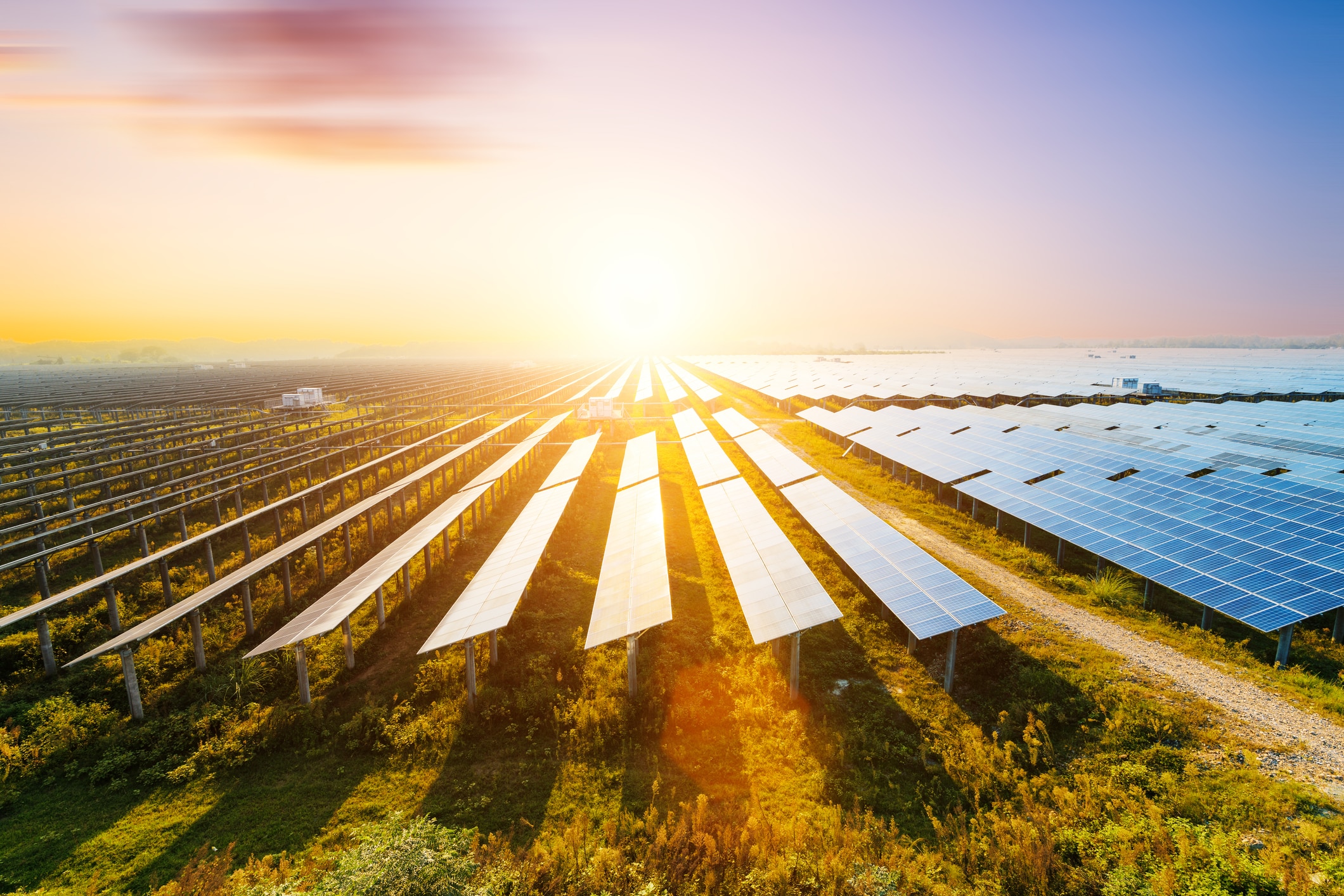Batteries included: how better storage can transform renewable energy
The sun doesn't always shine and the wind doesn't always blow – but soon that may not matter.
Image: Reuters/David Gray
Stay up to date:
Sustainable Development
Energy storage is arguably the next big thing in the cleantech industry, with the potential to bring constructive disruptions to the renewable energy and electric vehicle markets. Today, storing electricity is expensive – but the cost of storage is falling rapidly. Cheaper energy storage opens up a plethora of opportunities to accelerate the transition to sustainable energy systems, including in electric vehicles, urban power consumption, rural energy access, electricity distribution, grid-integration and a complete replacement of coal power plants.
Despite reaching grid parity, renewable energy is not yet a fully reliable alternative to fossil-powered generation. The sun doesn’t always shine and the wind doesn’t always blow, meaning renewable energy systems are dependent on supplemental generation through other means. In the sustainable transport sector, the operating cost per kilometre for electric vehicles is already cheaper than the cost of fuel per kilometre in petrol cars. However, electric cars are up to 50% more expensive to buy, largely due to expensive batteries.
Variable, uncertain and location-constrained generation also makes grid integration and load management costlier for distribution companies. In many countries, the demand for electricity has two distinct peaks – one in the morning and one after sunset. However, solar electricity is produced during the day, when demand is typically low. This problem is also known as the “duck curve”. Further, the battery-backed off-grid renewable energy plants in rural areas continue to have 6-8 times higher levelized cost of electricity (LCOE) than in grid-connected solar systems. This makes universal access to clean energy a challenging goal.
There are several electricity storage technologies in use, ranging from different kinds of batteries, such as lithium ion and lead acid, to pumped hydro and thermal storage. The advancements in energy storage are encouraging, with batteries becoming cheaper and more efficient, and with longer life. Between 2011 and 2017, the cost of lithium ion batteries fell by 74%. Experience rates suggest that this cost may reduce by another 50% by 2025. Similarly, the cost is also falling for other battery technologies. Cheaper, more efficient electricity storage has the potential to bring constructive disruptions in four distinct areas: (1) urban power consumption, (2) rural energy access, (3) electric vehicles, and (4) grid integration with the complete phasing out of coal power plants.
What if an industrial or residential consumer wants to meet up to 100% of his electricity demand through renewable energy? Broadly, there are two options. One is to meet the full demand via rooftop solar, captive generation (a privately owned power plant) or open access, with either grid or a generator as a backup for extreme scenarios. A second option is to procure clean power from the grid, which in most countries is largely based on fossil-powered generation, with a small proportion of clean energy. For the latter option, the distribution companies in turn will have to procure electricity solely from renewable energy sources. Both routes would require electricity storage.
The chart below illustrates the impact of storage on the cost of electricity in the first option discussed above, and assumes that the power consumption is equally split between day and evening. At the prevailing costs, batteries can store and supply electricity at around 12 Indian rupees (17¢) per unit above the solar tariff. With falling battery cost, switching to 100% renewable energy may become the most economical option even for residential consumers within 10 years.

Globally, 1.2 billion people are without access to electricity and rely mostly on kerosene for lighting. To achieve universal energy access by 2030, more than $1 trillion of investment is required. While expanding the national grid to rural areas is among the most economical options to increase energy access, such expansion is restricted by financial and operational constraints. Years of subsidized electricity has turned most public utilities in developing countries such as India into financially burdened entities, hindering their ability to extend services into remote areas.
Alternatively, renewable energy mini-grids are emerging as the most economical option for providing energy access. However, building financially viable businesses is challenging for rural energy companies. Even with soft capital support in the form of grants subsidy and low-cost debt, most of these companies are struggling to generate positive returns. The battery constitutes around 15% of the capital cost of a solar mini-grid and also needs replacement every 5-7 years. With falling prices of batteries (and solar modules), the solar mini-grids may be able to demonstrate commercial viability in less than three years. Consequently as the business viability of mini-grids gains traction, the segment will attract much-needed private capital.
Transitioning to electric vehicles (EV) or e-mobility is a critical component of the larger transition to sustainable energy systems. There are two major factors that will determine the mass adoption of electric vehicles. First, the charging infrastructure, and second, the cost of battery storage. The government needs to support the former, particularly in developing countries, while the market will drive the latter. Taking into account the cost of electricity and the cost of petrol, the on-road energy consumption of an e-car is 70% cheaper than that of a petrol-based car. However, the upfront cost of an e-car is up to 50% higher. Thus savings from the cost of fuel can take 2-4 years to compensate for the higher upfront cost.

Today, the battery accounts for roughly 50% of the cost of electric vehicles. With falling battery costs, electric cars may be cheaper upfront than their combustion engine counterparts in less than seven years.
The mismatch between peak electricity generation and demand increases when the share of intermittent sources such as solar and wind energy increases in the total installed capacity. That raises the question: can renewable energy ever completely replace coal power plants? The answer is, yes. While demand-side management and geographic diversification of renewable energy generation have an important role to play in tackling the demand-supply mismatch, batteries are emerging as alternatives to gas “peakers” – plants that run only when there is high demand, and which are critical to meeting peak loads. For distribution companies, solar with batteries may become a more economical alternative to a coal plant with gas peakers in less than 10 years. And that may eventually pave the way for a complete phasing out of fossil power plants.
Don't miss any update on this topic
Create a free account and access your personalized content collection with our latest publications and analyses.
License and Republishing
World Economic Forum articles may be republished in accordance with the Creative Commons Attribution-NonCommercial-NoDerivatives 4.0 International Public License, and in accordance with our Terms of Use.
The views expressed in this article are those of the author alone and not the World Economic Forum.
Forum Stories newsletter
Bringing you weekly curated insights and analysis on the global issues that matter.
More on Sustainable DevelopmentSee all
Goodness Esom
July 18, 2025
Robert Piper
July 17, 2025
Lisa Satolli
July 17, 2025
Susan Mang'eni and Mamadou Ndiaye
July 15, 2025
Sreevas Sahasranamam and Aileen Ionescu-Somers
July 10, 2025
Resilience roundtable: How emerging markets can thrive amid geopolitical and geoeconomic uncertainty
Børge Brende, Bob Sternfels, Mohammed Al-Jadaan and Odile Françoise Renaud-Basso
July 9, 2025





